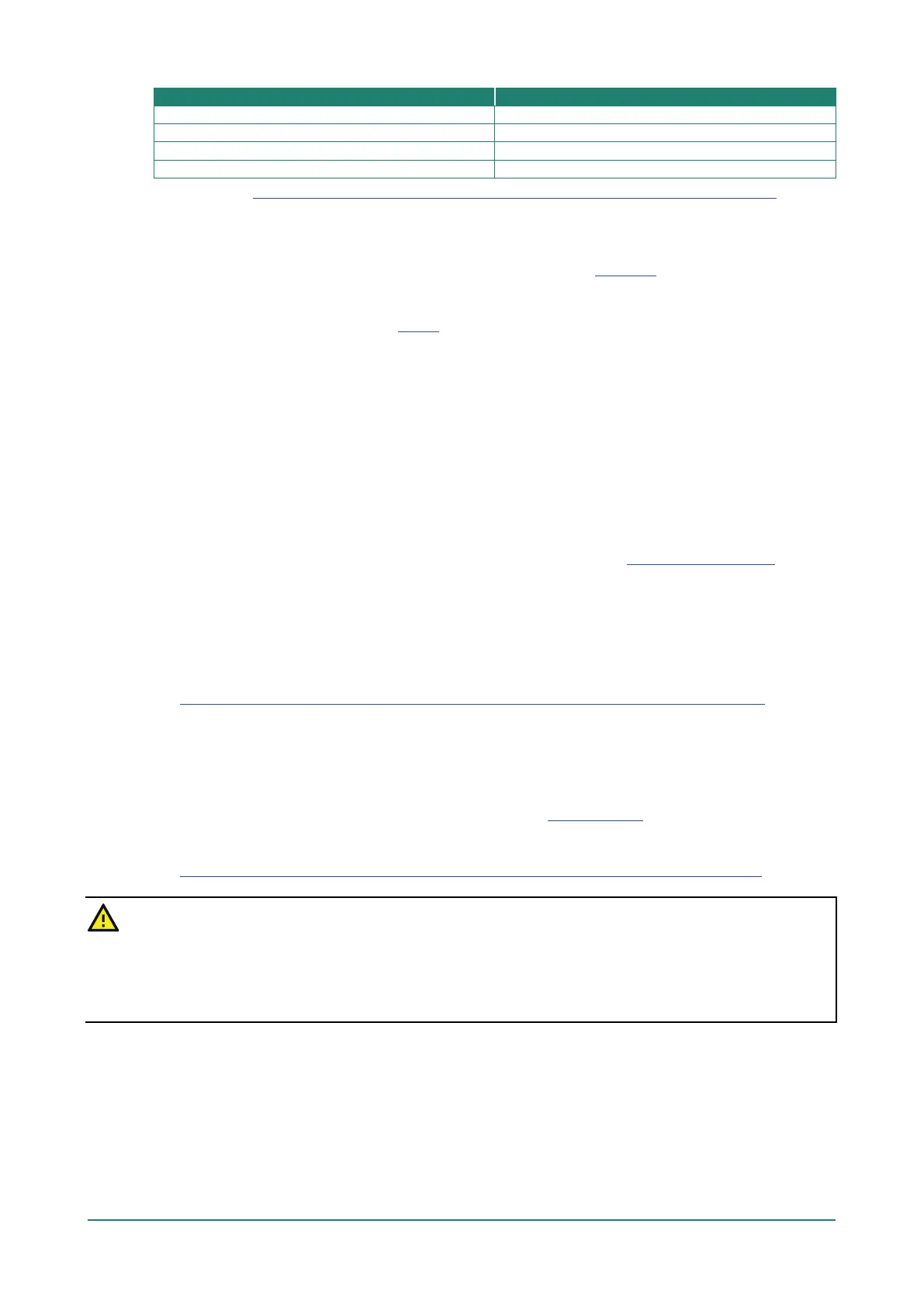V7 and above for OS X 10,9 (Mavericks) and above
Reference: https://support.globalsign.com/ssl/general-ssl/tls-protocol-compatibility#Browsers.
2. The device supports event logs and syslog for SIEM integration:
a. Event log: Due to limited storage capacity, the event log can only accommodate a maximum of
10,000 entries. Administrators can set a warning for a pre-defined threshold. We recommend that
users regularly back up system event logs. Please refer to the Event Log section for more
information and instructions.
b. Syslog: The device supports syslog and advanced secure TLS-based syslog for centralized SIEM
integration. Please refer to the Syslog section for more information and instructions.
3. The device can provide information for control system inventory:
a. SNMPv1, v2c, v3: We recommend administrators use SNMPv3 with authentication and encryption to
manage the network. Please refer to the MIB file for the detailed OID structure.
b. Telnet/SSH: We recommend that administrators use SSH with authentication and encryption to
retrieve device properties.
c. HTTP/HTTPS: We recommend that administrators use HTTPS with an internally renewed certificate
or imported certificate that has been issued by a Certificate Authority (CA) to configure the device.
4. Denial of Service protection: We recommend enabling Trusted Access, Wi-Fi ACL, L2/L3 firewalls to
mitigate the risk of DoS attack attempts.
5. Periodically regenerate the SSH and SSL certificates: Even though the device supports up-to-date cipher
suites to ensure sufficient complexity, we strongly recommend users to frequently renew their SSH key
and SSL certificate in case the key is compromised. Please refer to the Certificate Management section
for more information and instructions.
Maintenance
1. Perform firmware upgrades frequently to enhance features, deploy security patches, or fix bugs.
Periodically check the official product website or Moxa security advisory updates at
https://www.moxa.com/en/support/product-support/security-advisory/security-advisories-all.
2. Periodically, or after each maintenance session, back up the running system configuration to be able to
restore the device back to the latest stable, secure state if necessary. The device supports password
encryption and signature authentication for backup files to protect the system configuration files from
being tampered with,
3. Examine event logs frequently to detect any anomalies.
4. Periodically, or after each maintenance session, check the Security Status overview to review and
confirm the current device’s security conditions.
5. To report vulnerabilities of Moxa products, please submit your findings on the following web page:
https://www.moxa.com/en/support/product-support/security-advisory/report-a-vulnerability.
ATTENTION
For AWK-1151C models: Due to a console port hardware limitation on AWK-1151C models,
disconnecting the console cable WILL NOT immediately auto-logout an active CLI session but rather auto-
logout once the active session times out. To prevent exposure risks on the AWK-1151C’s console
connections, always log out each CLI session before disconnecting the console cable.
Decommission
1. Power off the device to be decommissioned and unmount it from its physical installation location.
2. Identify the serial number or device name and locate (if applicable) any configuration backup files or
certificates generated by the device to be decommissioned and ensure the deletion of these files.

